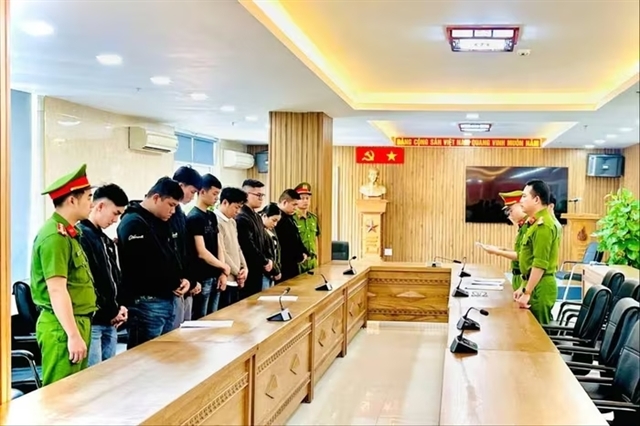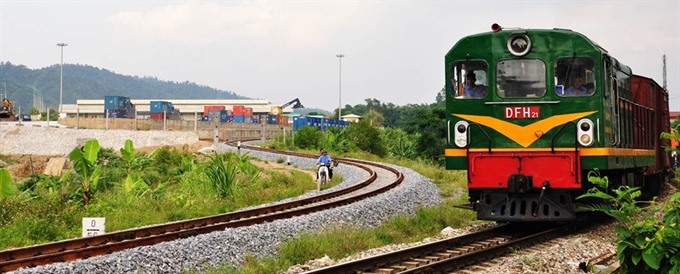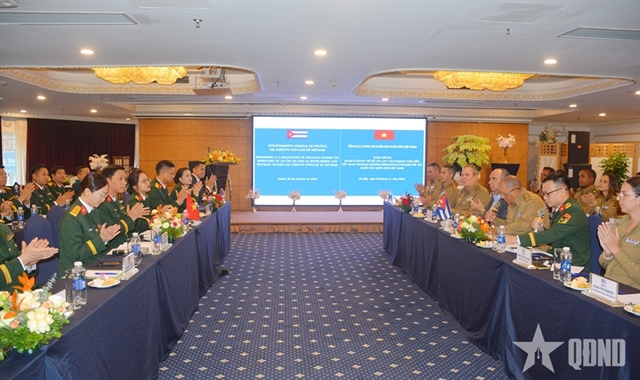 Society
Society

Việt Nam needs about VNĐ 9-15 trillion (US$396.9 -661.5 million) to develop its inland container depots (ICD) over the next three years, while funding for the following decade will be about VNĐ20-22 trillion (US$882-970.2 million).
 |
| A freight train passes the Lào Cai Inland Container Depot in the northern mountainous province of Lào Cai. — Photo icdlaocai.com |
HÀ NỘI — Việt Nam needs about VNĐ9-15 trillion (US$397-661.5 million) to develop its inland container depots (ICD) over the next three years, while funding for the following decade will be about VNĐ20-22 trillion (US$882-970.2 million).
This is part of a newly-approved Government Decision 2072/QĐ-TTg on adjustments to the master plan for Việt Nam’s inland container depot development to 2020, with a vision to 2030.
The decision replaces Decision 2223/QĐ-TTg on ICD development master plan dated 2011. According to the Government, the adjustments aim to help inland container depot systems meet increasing demands for export-import transport, increase sea port capacity for goods clearance, ensure the safety of goods and reduce traffic congestion in urban areas.
Inland container depots will be developed into hubs for organising goods transport and providing logistics services. By 2020, inland container depots are expected to deal with at least 15-20 per cent of the volume of goods containers, with a total capacity of 4 - 6.84 million 20-foot-equivalent unit (TEU)/year.
The figures are expected to reach at least 25-30 per cent and between 12 - 17.6 million TEU/year, respectively, by 2030.
Fifteen inland container deports will be built across the country.
Six ICDs in the North are planned in the coastal economic zone, Hà Nội - Lào Cai economic corridor, Hà Nội – Lạng Sơn economic corridor, the economic zone in the north-west of Hà Nội, the zone in the south-east of Hà Nội, and the Hà Nội –Thái Nguyên – Cao Bằng economic corridor.
Six ICDs in the central and Central Highlands are planned to be in the Highway 9 economic corridor, Highway 19 economic corridor, Đà Nẵng –Thừa Thiên Huế - Highway 14 economic area, the Central Highland Region, Nghi Sơn Economic Zone, Highway 8 economic corridor, and Highway 12A economic corridor.
Three ICDs in the south are planned in the economic zones in the north east of HCM City, the south west of HCM City and the Mekong Delta Region.
In the next three years, the work will focus on developing inland container deports along transport corridors connecting to large seaports such as Hải Phòng Port in the north and Cái Mép-Thị Vải Port in the south.
Investment priority will be given to ports close to industrial clusters and parks, export processing zones, logistics centres and international border gates.
According to Government Decree 38/2017/ND-CP on the development and management of ICDs in Việt Nam, ICDs are used to wrap and unload goods transported via containers and move them to sea ports and other locations.
They are also used to complete customs procedures on imports and exports, temporarily store goods and repair containers.
New ICDs must have a minimum area of five hectares with at least two forms of transport available.
Figures from the Ministry of Transpot show that there are 20 ICDs in Việt Nam.
There are 10 in the North, which are connected with Hải Phòng. However, most have no connection with railways and waterways. Thus, these ICDs are restricted to supplying road transport services.
In the South, 10 ICDs are connected with the sea ports of Vũng Tàu and HCM City, seven of which are linked with domestic waterways.
These ICDs operate more effectively. Up to 80 per cent of goods nationwide are transported via these depots. However, some ICDs are located inside the city, causing traffic jams, and thus need relocation. — VNS




